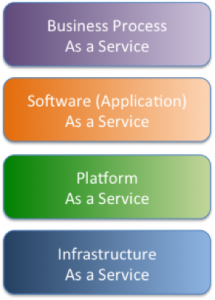Next Generation IT: What Is It, and How Do I Do It?
Abstract
What does “Next Generation IT” really mean? This paper takes a holistic view of the various layers and components that comprise Next Generation IT and guides CIOs and CTOs on what to look for in modernising their applications and creating Next Generation IT solutions. While the layers and components are important in and of themselves, the real value comes from integrating all the pieces without technology bias.
Keywords: Big Data, Business Continuity, Mobility, DevOps, Service Management, Security, Orchestration, Open Source, As a Service, Modernisation, Business Process, Application, Platform, Infrastructure
————————–
What is Next Generation IT?
Next Generation IT solutions are becoming buzz words in the IT arena. Your business has to be considering Next Generation or you going to be Old Generation and that will never do. But what is Next Generation IT and how does it fit into my existing legacy IT estate? I can’t just rip and replace everything I have installed over the last 15 years; my CFO will have a heart attack! But every time my CEO meets with analysts or our vendor partners, all are energised to improve time to market, reduce cost, or improve operational efficiency by simply deploying Next Generation IT.
So what is Next Generation IT? What does it consist of, how it can it be placed within your IT estate, and how will your business benefit? This paper addresses these questions, targeting CTOs and CIOs who are considering adding or renewing part or all of their IT estate. This paper focuses on issues to consider to help your business move towards a more agile, scalable and future-proof IT estate.
Start with the Stack
 This stack diagram is not new; it forms the foundation for where we place and consider technologies and solutions. Before we get into detail, let’s align some terminology. I like using the familiar Lego bricks example. Think of a single technology product as an individual block — i.e., server, network switch, ERP app, etc. A solution is the combination of technologies integrated together to solve a business need. Solutions can only work if the pieces integrate successfully. Lego bricks link together because they have standard interfaces (you cannot link a Lego brick and Duplo brick together.). All Lego bricks can link together to create complex designs. If we go back to our four layer stack, we can consider both technology and solutions that fit into each layer. The focus of this paper is on the solutions versus the technology, as these are a key aspect of Next Generation IT.
This stack diagram is not new; it forms the foundation for where we place and consider technologies and solutions. Before we get into detail, let’s align some terminology. I like using the familiar Lego bricks example. Think of a single technology product as an individual block — i.e., server, network switch, ERP app, etc. A solution is the combination of technologies integrated together to solve a business need. Solutions can only work if the pieces integrate successfully. Lego bricks link together because they have standard interfaces (you cannot link a Lego brick and Duplo brick together.). All Lego bricks can link together to create complex designs. If we go back to our four layer stack, we can consider both technology and solutions that fit into each layer. The focus of this paper is on the solutions versus the technology, as these are a key aspect of Next Generation IT.
Let’s start from the top and outline what should be considered when thinking about Next Generations solutions.
Link to Part 2 Business Process
